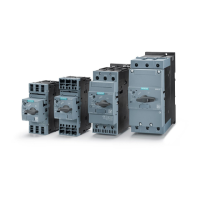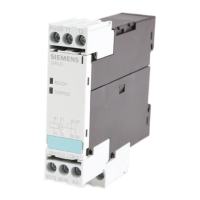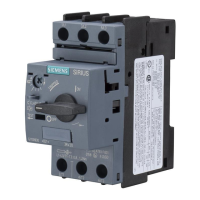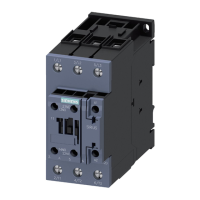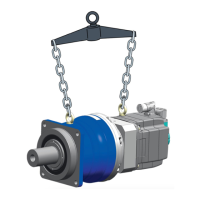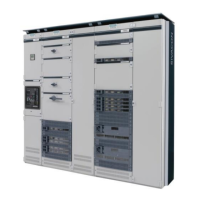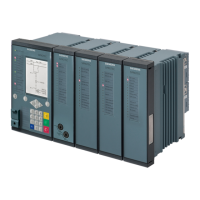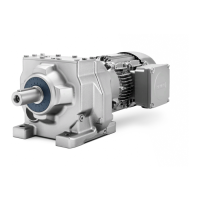SIRIUS 3RV2 motor starter protectors
4.5 Configuration
SIRIUS Innovations
398 System Manual, 01/2011, A8E56203870002-03
4.5.12 Selecting the motor starter protectors
Since the inrush current can cause the operational currents, the starting currents, and the
current peaks to be at different levels, even where motors with the same power are being
used, the motor power values in the selection tables should be viewed as guide values only.
The actual starting characteristics and rated data of the motor to be protected are always the
decisive factors in selecting the right motor starter protectors. The same applies for motor
starter protectors to be used for transformer protection.
Explosion protection
Note
In the case of 2- and 3-pole loading, the permissible deviation of the tripping time with 300%
to 800% current setting is up to ± 20% maximum and as such meets the requirements of
DIN VDE 0165 and EN 50019.
3RV20, CLASS 10 motor starter protectors have ATEX approval according to EU Directive
94/9/EC (DMT certificate).
1)
1)
From 04/2010 or on request
3RV20 motor starter protectors are suitable for overload protection of explosion-protected
motors with "increased safety" type of protection EEx e.
4.5.13 Project guidelines for use downstream of frequency converters/inverters with
pulsed voltage
Using thermal motor protection devices downstream of frequency converters/inverters with
pulsed voltage affects switching devices and can cause them to trip undesirably. Practical
configuration guidelines for such applications are given below.
4.5.13.1 The effects of high-frequency currents on the thermal overload release
The thermal overload release on motor starter protectors and overload relays usually
comprises a bimetal and a heating coil through which the motor current flows, causing heat
rise. Excessive deflection of the bimetal (caused by the motor current being too high) will
cause the motor current to be disconnected.
Releases of this type are adjusted with a 50 Hz alternating current. As such, the tripping
point will only be in the required normal range range for currents whose effective heat value
is the same as or similar to this adjustment current. This is the case for alternating currents
from 0 to 400 Hz and for direct currents.
Where high-frequency currents such as those occurring downstream of converters are
concerned, there is additional heat rise of the bimetal. This can be attributed on the one
hand to eddy currents induced by harmonics and on the other to the skin effect in the heating
coil. Both cause the overload release to trip, even at reduced currents (undesirable
premature tripping!).
The effects are dependent upon the frequency of the current. The higher the frequency of
the converter and the lower the setting range/rated current, the more the tripping current will
drop.

